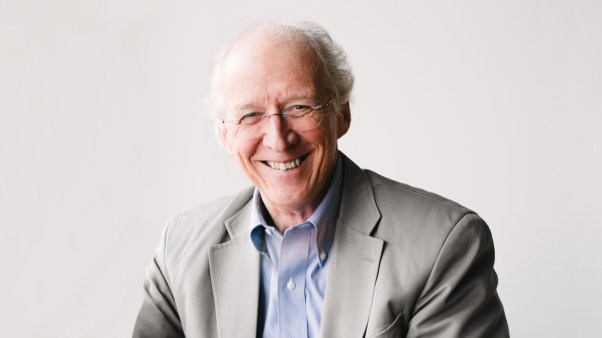The public image of sex in America bears virtually no relationship to the truth.” So conclude researchers at the University of Chicago after a landmark study. “Sex in America: A Definitive Survey,” by Robert Michael, John Gagnon, Edward Laumann, and Gina Kolata (Boston: Little, Brown and Co., 1994) details a carefully controlled study of 3,432 respondents selected randomly from the general population. The study provided both good news and bad news for church leaders.
GOOD NEWS
Religious conservatives enjoy sex.
The notion that people holding fervent religious convictions cannot enjoy sex simply did not stand up. The researchers concluded, “Despite the popular image of straitlaced conservative Protestants, there is at least circumstantial evidence that the image may be a myth, at least as it pertains to sexual intercourse.”
 Researchers discovered to their surprise that the one group of adult females most likely to experience orgasm during intercourse with their primary partner was conservative Protestant women. A full 32 percent of this group reported “always” experiencing sexual climax, far ahead of the 22 percent among females who have no religious affiliation. The researchers were impressed: “Perhaps conservative Protestant women firmly believe in the holiness of marriage and of sexuality as an expression of their love for their husbands.”
In addition, the study found that both conservative Protestant males and females lead all other religious (and non-religious) groups in frequency of sexual intercourse.
Singles are not as sexually active as married people.
Who is having the most sex in America–the “mundane” married individual or the “young-and-restless” single?
The study declared: “The group that has the most sex is not the young and footloose but the married.”
Perhaps the most remarkable statement of the study linked traditional sexual ethics and sexual fulfillment. “Our results could be read to mean that an orthodox view of romance, courtship, and sexuality–your mom’s view, perhaps–is the only route to happiness and sexual satisfaction.” While the researchers stop short of endorsing traditional Judeo-Christian morality as the best approach to finding sexual happiness, their data lend credence to the idea.
Marital infidelity is lower than assumed.
The Chicago study found a lower-than-expected rate of sexual unfaithfulness among married couples. For decades Americans have been told that 50 percent of men and 35 percent of women are unfaithful to their spouses. The real figures: only from 15 to 35 percent of men and only 20 percent of women. The notion that most married people will have an affair simply isn’t true.
Homosexuality is not widespread.
A popular figure presented since the Kinsey Report is that at least 10 percent of the population is homosexual. The Chicago study found only 1.4 percent of women and 2.8 percent of men identified themselves in this way. While a larger percentage reported having had homosexual experiences in their lifetime, only this minute percentage described themselves as being gay.
BAD NEWS
Many Christians believe in “relational sex.”
Researchers divided respondents into three categories of attitudes toward sex: traditional, relational, and recreational. The traditional group (one-third of respondents) say religious belief always guides their sexual behavior and that premarital, extramarital, and homosexual sex is wrong. The relational group believe sex should be part of a loving relationship, but should not necessarily be restricted to marriage (nearly half the sample). The final group, the recreational proponents, believe sex should be enjoyed for its own sake and doesn’t necessarily need to have anything to do with love (approximately a quarter of the respondents).
What was surprising, and perhaps disconcerting, is that only 50.5 percent of conservative Protestants fall into the traditional category. (Among mainline Protestants, 30.9 percent were in the traditional group; among Catholics, 22.2 percent.) The data suggest a chasm between official doctrinal teachings and the behavior of followers.
Protestants are not living up to their teachings on monogamy.
One place the chasm appeared was the issue of monogamous sexual behavior. Of those groups reporting only one sex partner in the last twelve months, Jewish believers led all others, with 75 percent claiming just one sexual mate. Conservative Protestants came in second to last (70 percent), just ahead of those claiming no religious affiliation (68 percent).
A surprising percentage of Protestants reported having two to four sexual partners in the last twelve months: Fourteen percent of conservative Protestants and 13 percent of mainline Protestants slept with two or more people during the last year. Another 3 percent of conservative Protestants and 2 percent of mainline Protestants had five or more sexual partners last year.
Cohabitation before marriage is rapidly increasing.
Of those women born between 1933 and 1942, 93 percent married without first living with their mate. But for women born between 1963 and 1974, the number dropped to 36 percent. It’s no illusion: people are choosing to live together before marriage; it is becoming the rule rather than the exception.
Pornography is widespread.
Forty-one percent of all men reported having done one of the following in the last 12 months: watching an X-rated movie, visiting a club with semi-nude or nude dancers, purchasing sexually explicit books, magazines, erotic devices or sex toys, or calling a sex phone number. Sixteen percent of women reported doing one of the above as well. A pastor could safely assume at least some individuals sitting in the congregation are reflected in these statistics.
While the report card of Sex in America has mixed grades for the sexual behavior of Protestants, the survey confirmed that Christians see sex more as a gift to be enjoyed within marriage, than an evil to be endured or avoided. The study should serve as a fitting obituary to the idea that faith and sexual enjoyment are mutually exclusive.
*********************
Bob Moeller is a contributing editor for LEADERSHIP Journal.
Copyright (c) 1995 Christianity Today, Inc./LEADERSHIP Journal
lecurrmrw5L30305426
Copyright © 1995 by the author or Christianity Today/Leadership Journal. Click here for reprint information on Leadership Journal.









